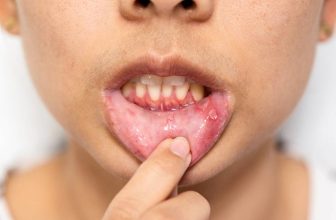When you have a toothache, it can be challenging to determine the cause of the pain.
One minute the pain might be throbbing and intense, and the next, it might be gone completely. So what’s going on? Why does tooth pain come and go?
Why does tooth pain come and go?
When you experience tooth pain, it can be frustrating because it comes and goes. You may not know why it happens or what you can do to stop it. In this blog post, we will explore possible reasons for tooth pain and offer some solutions to help ease the pain.
1. Cavities
One of the most common reasons for tooth pain is cavities. A cavity is a hole in your tooth that is caused by bacteria. The bacteria eat away the enamel on your teeth and create a hole that can cause pain when you eat or drink something hot or cold. If you have a cavity, your dentist will likely need to fill it to stop the pain.
2. Gum disease
Another common cause of tooth pain is gum disease. Gum disease is a condition that affects the gums and tissues around your teeth. It can cause inflammation and bleeding and can eventually lead to tooth loss. If you are experiencing gum disease, your dentist may recommend antibiotics or surgery to treat the condition.
3. Tooth fracture
A tooth fracture can also cause pain. A tooth fracture is a break in the tooth that can occur from an injury, clenching or grinding your teeth, or eating hard foods. If you have a tooth fracture, your dentist will likely need to repair the tooth with a filling or crown.
4. Tooth infection
A tooth infection is another possible cause of tooth pain. A tooth infection occurs when bacteria enter the tooth’s pulp and cause an infection. This can happen if you have a cavity that has not been treated or if you have had an injury to the tooth. If you have a tooth infection, your dentist will likely need a root canal to remove the infected tissue and save the tooth.

5. Wisdom teeth
Wisdom teeth can also cause pain. Wisdom teeth are the third molars that erupt in the back of the mouth. They can sometimes become impacted or grow at an angle, which can cause pain. If you have wisdom teeth that are causing pain, your dentist may recommend removing them.
6. Ruptured filling
A ruptured filling can also cause tooth pain. A filling is used to fill in a cavity and is made of a type of material that seals the hole in the tooth. If the filling becomes loose or breaks, it can cause pain. Your dentist will likely need to replace the fill to stop the pain.
7. Cracked tooth
A cracked tooth can also be a source of pain. A cracked tooth can occur from an injury, clenching or grinding your teeth, or eating hard foods. If you have a cracked tooth, your dentist will likely need to repair the crack with a filling or crown.
8. Teething
Teething can also cause tooth pain in babies and young children. Teething is the process of new teeth erupting through the gums. It can cause pain, inflammation, and irritation. If your child is teething, you can give them over-the-counter medication to help ease the pain.
9. TMJ
TMJ is a condition that affects the joints in your jaw. It can cause jaw, face, neck, and head pain. If you have TMJ, your dentist may recommend wearing a mouthguard or splint to help alleviate the pain.
10. Sinus infection
A sinus infection can also cause tooth pain. A sinus infection is an infection of the sinuses that can cause pressure and pain in the face. If you have a sinus infection, your dentist may recommend taking over-the-counter medication to help relieve the pain.
A variety of different things can cause tooth pain. If you are experiencing tooth pain, it is essential to see your dentist find out the cause.
They can treat the underlying condition and help relieve the pain. Only a professional can properly diagnose the cause of your pain and recommend the best treatment.
In the meantime, there are some things you can do to help ease the pain. Try rinsing your mouth with warm salt water, taking over-the-counter pain medication, or using a dental adhesive to keep your teeth from touching. Contact your dentist immediately if the pain is severe or lasts more than a few days.
How To Treat Throbbing Tooth Pain That Comes and Goes
If you’re experiencing throbbing tooth pain that comes and goes, you can do a few things to help ease the discomfort.
Here are a few tips:
1. Use a cold compress to help reduce swelling and inflammation.
If you’re experiencing throbbing tooth pain that comes and goes, using a cold compress can help reduce swelling and inflammation.

Here are a few tips on how to use a cold compress:
- Wrap a cold, damp towel around an ice pack and hold it against the affected area for 10-15 minutes.
- Apply a cold compress to the area several times a day.
- Drink plenty of fluids to help reduce inflammation.
2. Take over-the-counter pain medication to help relieve pain.
If you’re experiencing throbbing tooth pain that comes and goes, taking over-the-counter pain medication can help relieve pain.
Here are a few tips on how to take over-the-counter pain medication:
- Follow the instructions on the package.
- Take medicine with food or milk to avoid stomach upset.
- Do not take more than the recommended dosage.
3. Rinse your mouth with warm salt water several times a day.
If you’re experiencing throbbing tooth pain that comes and goes, rinsing your mouth with warm salt water can help reduce inflammation and ease discomfort.
Here’s how to make a saltwater rinse:
- Mix 1 teaspoon of salt in 8 ounces of warm water.
- Gently swish the solution around your mouth for 1 minute.
- Spit the solution out and rinse your mouth with plain water.
- Repeat several times a day.
4. Clove Oil
If you’re experiencing throbbing tooth pain that comes and goes, clove oil can help numb the pain. Here’s how to use clove oil:
- Soak a cotton ball in clove oil and apply it to the affected area.
- Leave the cotton ball in place for 30 minutes.
- Repeat several times a day.
5. Garlic Paste
If you’re experiencing throbbing tooth pain that comes and goes, garlic paste can help reduce inflammation.
Here’s how to make a garlic paste:
- Mix equal parts garlic and water to form a paste.
- Apply the paste to the affected area.
- Leave the paste on for 10 minutes.
- Rinse your mouth with warm water.
- Repeat several times a day.
6. Peppermint Tea Bag
If you’re experiencing throbbing tooth pain that comes and goes, peppermint tea can help ease discomfort.
Here’s how to use a peppermint tea bag:
- Place the tea bag in a cup of boiling water and let it steep for 3-5 minutes.
- Remove the tea bag and allow it to cool.
- Place the tea bag on the affected area.
- Leave the tea bag in place for 10 minutes.
- Repeat several times a day.
7. See your dentist as soon as possible.
Your dentist can determine the cause of your pain and recommend the best course of treatment.

Preventing toothache pain
You can help prevent toothache by practicing good oral hygiene and regularly seeing your dentist for cleanings and checkups.
Tips for good oral hygiene:
- Brush your teeth twice a day with fluoride toothpaste.
- Floss daily.
- Avoid foods and drinks that are high in sugar.
- Don’t smoke.
These tips can help you prevent throbbing tooth pain that comes and goes. If you’re experiencing pain, see your dentist as soon as possible to rule out any severe underlying conditions.
Conclusion
If you’re experiencing tooth pain, you must see a dentist as soon as possible. Dentists have the necessary tools and expertise to properly diagnose and treat your aching tooth. If your tooth can be repaired or restored, they will do so. Otherwise, your dentist might entirely suggest a filling or replacement of the tooth. The earlier you visit a dentist, the lower your chances of needing a complicated procedure.







